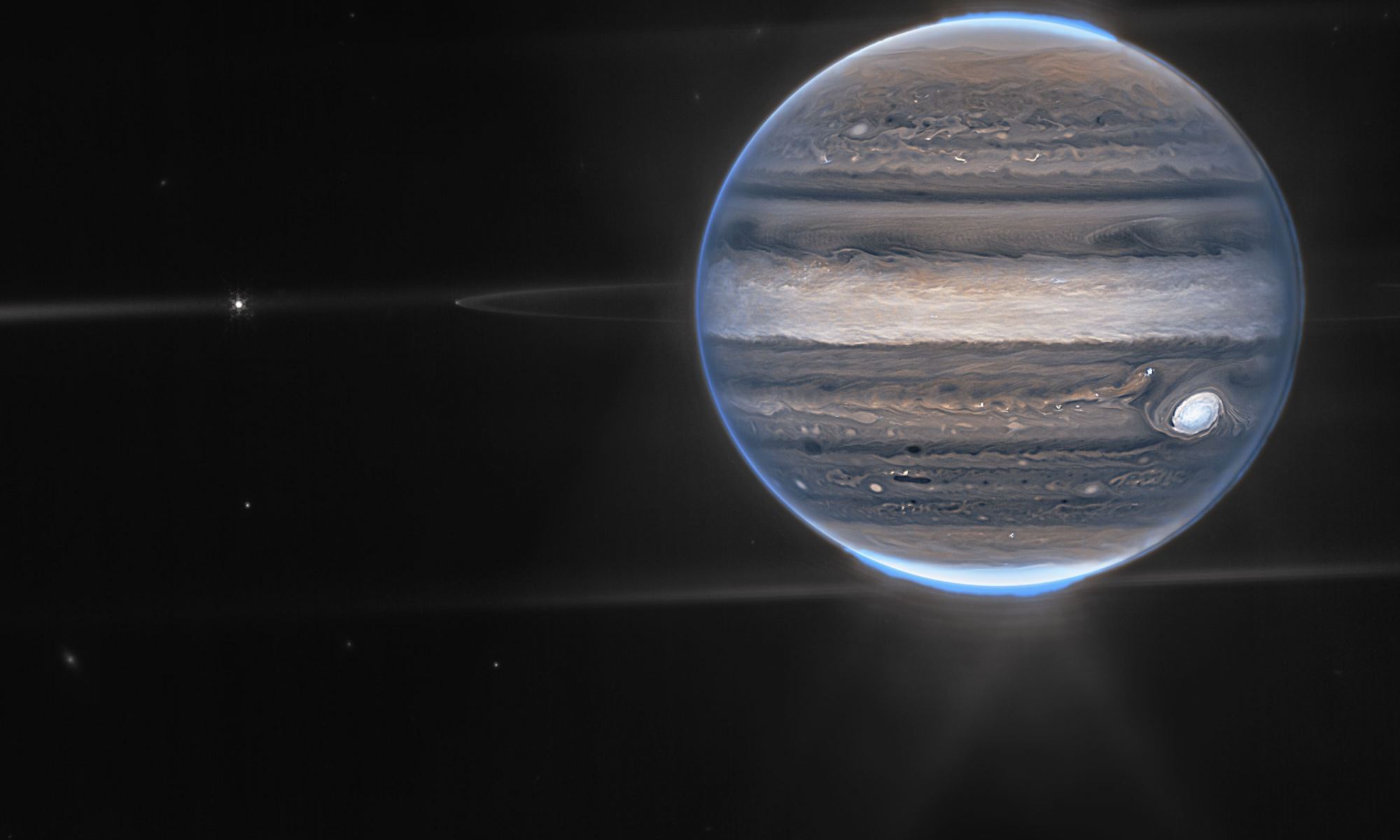NASA’s James Webb Space Telescope is designed to probe the farthest frontiers of the universe, but newly released images of Jupiter prove that the observatory can also bring fresh perspectives to more familiar celestial sights.
The infrared images reveal Jupiter’s polar auroras and its faint rings as well as two of its moons — plus some galaxies in the far background. The planet’s Great Red Spot is there as well, but because it’s seen through three of JWST’s specialized filters, it looks white rather than red.
JWST’s new perspective should give scientists a better sense of how the complex Jupiter system is put together.
“We hadn’t really expected it to be this good, to be honest,” astronomer Imke de Pater, professor emerita of the University of California at Berkeley, said today in a NASA image advisory. “It’s really remarkable that we can see details on Jupiter together with its rings, tiny satellites, and even galaxies in one image.”
De Pater led the observations of Jupiter with Thierry Fouchet, a professor at the Paris Observatory, as part of an international collaboration for JWST’s Early Release Science program.
The two images released today come from the telescope’s Near-Infrared Camera, or NIRCam. JWST’s instruments are specialized to observe in infrared wavelengths because those wavelengths can reveal phenomena that would go unseen in visible wavelengths. For these pictures, the infrared readings have been translated into colors that range from red (for shorter wavelengths) to blue (for longer wavelengths).
JWST’s wide-field view, created using two infrared filters, shows two of Jupiter’s dozens of moons, Amalthea and Adastrea, as points of light to the left of the planet. Adastrea seems to be embedded in Jupiter’s ring system, which looks brighter in infrared than it does in visible light. The polar auroras and their diffraction spikes shine above and below the planet’s disk.
A three-filter image of Jupiter is more colorful: It shows the auroras and the light reflected by lower clouds and upper hazes in reddish hues. Hazes swirling around the poles are shown in yellow and greens. The light reflected by Jupiter’s primary cloud cover is depicted in shades of blue that are dappled with bright spots. The Great Red Spot is pinkish-white.

“The brightness here indicates high altitude – so the Great Red Spot has high-altitude hazes, as does the equatorial region,” Heidi Hammel, JWST interdisciplinary scientist for solar system observations and vice president for science at AURA, said in today’s image advisory. “The numerous bright white ‘spots’ and ‘streaks’ are likely very high-altitude cloud tops of condensed convective storms.”
JWST’s team collaborated with a citizen scientist named Judy Schmidt to translate the telescope’s infrared data into the images released today. Schmidt, who hails from Modesto, Calif., has no formal educational background in astronomy. But she got hooked on processing image data from the Hubble Space Telescope a decade ago when she won third prize in the European Space Agency’s “Hubble’s Hidden Treasures” competition.
“Something about it just stuck with me, and I can’t stop,” she said. “I could spend hours and hours every day.”
Just last month, the JWST team featured an image of the spiral galaxy M74 that was processed by Schmidt.
The wide-field image of Jupiter also drew upon the expertise of Ricardo Hueso, who studies planetary atmospheres at the University of the Basque Country in Spain.
The $10 billion NASA telescope, which was launched last Christmas with support from ESA and the Canadian Space Agency, is just getting started on an observational campaign that should last at least five years — and almost certainly much longer. JWST has already produced what’s considered the deepest infrared view of the universe captured to date, plus fresh looks at an exoplanet, a planetary nebula, a galaxy cluster, a star-forming region and the colorful Cartwheel Galaxy. Check out Universe Today’s JWST archive for the full array.

